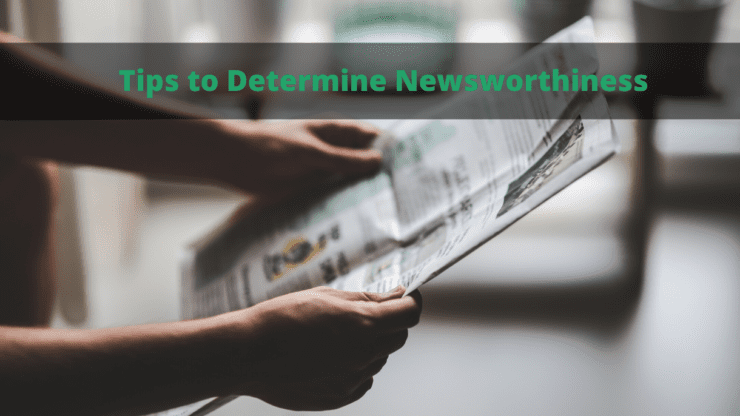Public relations practitioners judge if information and stories we are given are newsworthy or not.
Sometimes company representatives don’t stop to think if the information is actually newsworthy. For those of us in public relations however, to determine if something is newsworthy entails deciding if it addresses the reporter’s audience and if it is worth the reporter’s time and effort to gather information, interview, and write the piece.
In order to determine newsworthiness, you must position yourself as an objective outsider, and remove your rose colored glasses that everything your company does is worth writing about, in order to make such a judgment.
Here are a few tips to consider to help you determine if your information or story is newsworthy:
Impact and Appeal of Story:
What is the impact of the information or story? It is always helpful if your story directly impacts the reporters’ audience.
Example: A common example of impact and appeal comes from the food industry. If there is a dairy farm that finds it has bad eggs and they are the supplier to fast food chains across the country, sharing their story will impact and interest fast food consumers across the country.
Proximity:
Is the event close by or how impactful is the news to the local area?
Example: Each year the Little League World Series takes place, but a few years ago it was covered more intensely by the Philadelphia news outlets because of the involvement of the local team, The Taney Dragons.
Prominence:
Are the people or company prominent and influential in your community?
Example: Many times when you think of prominence, you think of people. However, prominence can also include companies. A client, Prudential Fox & Roach was acquired by Berkshire Hathaway HomeServices. Since the Fox & Roach name is so well known in the region and Berkshire Hathaway name is known nationally, their acquisition garnered media coverage far and wide.
Timeliness and Relevance:
Is the information or event happening in the future? If it happened a few days ago, it’s likely no longer newsworthy.
Example: Independence Seaport Museum opened a land market exhibit in November 2018. Two months before the opening Maven began outreach to reporters for the media preview. This ensured that the reporters were able to attend to gather the information and see the exhibit two weeks before it opened to the public. This allowed reporters to post their stories the week the exhibit opened.
Novelty:
Is there something different about the story or does the information deviate from the norm in some way?
Example: Yahoo.com covered the story of the Dogs of the Titanic. This was a novelty because not many think of the dogs that didn’t make it when the Titanic sank.
Human Interest:
Does the story connect with the audience on an emotional level? I always refer to this as “pull on the heart-strings” stories.
Example: 9/11 and the Boston Marathon bombing are just two tragedies in the United States that resulted in human interest stories. After the tragedies media focused on the survivors’ stories from the hospital about the tragedy and how it affected and changed their lives .
A First of it’s Kind:
Is your information revolutionary or cutting-edge? If so it can attract attention over other information.
Example: It isn’t every day that a story you have is a “first-of-its-kind,” but when you do it is important to leverage that fact in your media materials. A client, received news coverage from their announcement of being the first Federally Qualified Health Center in the state to offer on-site legal services.
Surprise:
Does the story or information share an unknown or shocking story?
Example: In 2013, Kanye West was launching his “Yeeezus” album. At the same time he had an interview with The New York Times where he shared unusual and shocking answers that you wouldn’t expect in an interview. This surprising story led to many news outlets across the world talking about his responses.
These tips only provide a simple overview to determine newsworthiness, but it is a good start to help you decide whether story ideas should or shouldn’t be sent to the media.
Posted In Maven Communications, Media Relations, Public Relations



